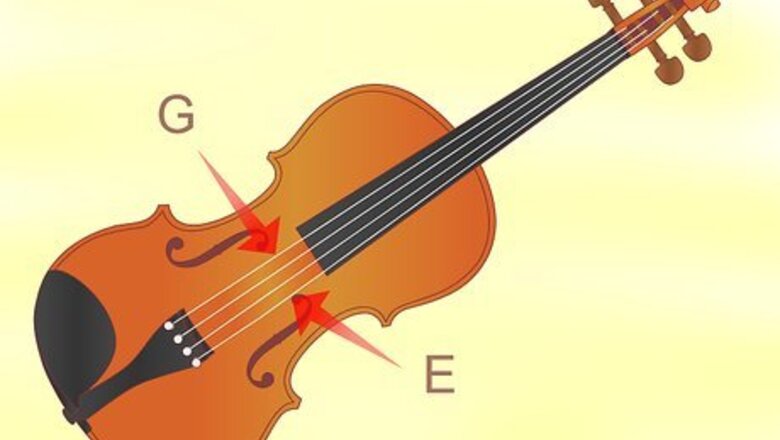
views
Positioning the Bridge
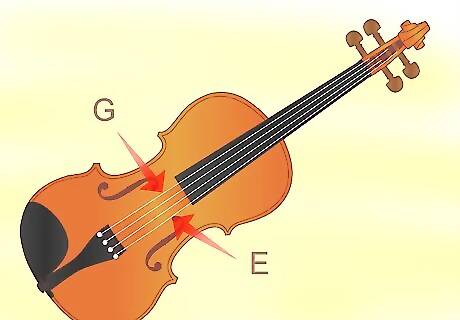
Identify the e-string and g-string side. A violin bridge is a small piece of wood. The bottom of the bridge is usually a straight line, while the top is arched slightly. When you're examining your bridge, you'll notice one side of the arch is slightly higher than the other. The lower side is the e-string side, and the taller side is the g-string side. When you put the bridge in place, make sure the e-string comes over the e-string side, and the g-string comes over the g-string side. If you don't know which strings are which, when the violin's head is facing your body, the g-string will be the string farthest to the left. The e-string will be the string farthest to the right.
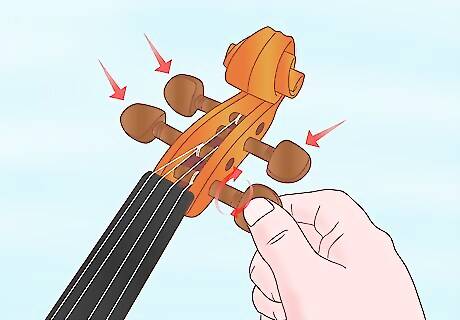
Loosen the strings slightly. To avoid snapping a string while placing the bridge, loosen the strings slightly. You loosen violin strings by turning the tuning knobs on the end of the violin. Strings should be loose enough that you can easily pull them up and down, allowing them to be lifted up enough to slip the bridge under the strings.
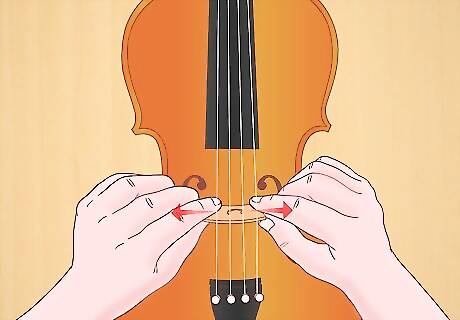
Place the bridge between the F-holes. The F-holes are two f-shaped holes found near the end of the violin's head. When you slide the bridge under the strings, make sure it's between the two F-holes. The bridge should be placed at roughly the midway point of the f-holes. Imagine you're drawing a line from one f-hole to the next, starting at the small horizontal line running through one f-hole and stretching out to meet the small horizontal line running through the other f-hole. This imaginary line should run through the violin bridge.
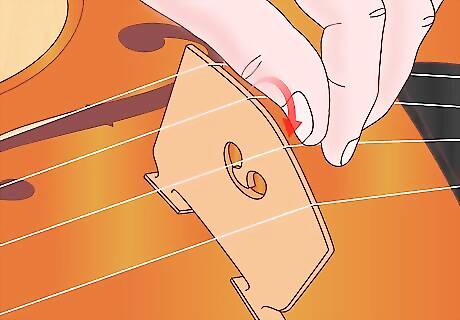
Put the violin strings in the knobs of the bridge. The violin bridge has four small knobs running across the top. The four violin strings fit into these knobs, keeping the bridge and the strings in place. Gently feed one violin string at a time into the knobs on the bridge.

Tighten the strings. Now you can retighten your strings to keep the knob in place. Gently turn each knob on the bottom of the violin. It's a good idea to use one hand to hold the bridge in place while tightening the strings, to prevent it from falling over. Tighten the strings until they are secure enough to keep the bridge in place while still having a very slight amount of slack.
Checking the Bridge

Make sure the bridge is standing at a 90-degree angle. Once you've placed your bridge, you'll want to check to make sure its placement is correct. Lay your violin down on a flat surface. Get down to the violin's level. The side of the bridge facing the violin's tailpiece should stand at a roughly 90 degree. The other side of the bridge should be sloped forward slightly. If the bridge is not forming a 90-degree angle, you may have put it in place backwards. You'll have to remove the bridge and start over.
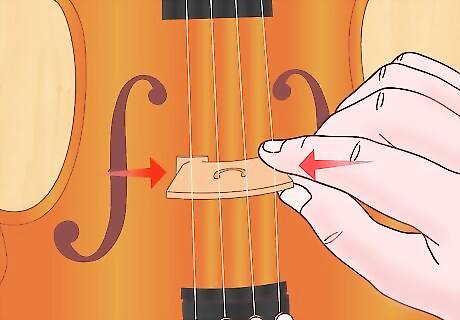
Check to make sure the bridge is in the center of the violin. Your bridge should be in the center of the violin. It should not be too far to the left or right. If your bridge is leaning to the right or the left, gently push it until it's in the center of the violin. You can simply eyeball to see if the bridge is in the center by glancing at the violin from a bird's eye angle. If you want to be extra sure the bridge is positioned correctly, however, you can use a ruler or measuring tape to measure the length of each end of the bridge to the end of the violin. The measurements should be roughly equal.
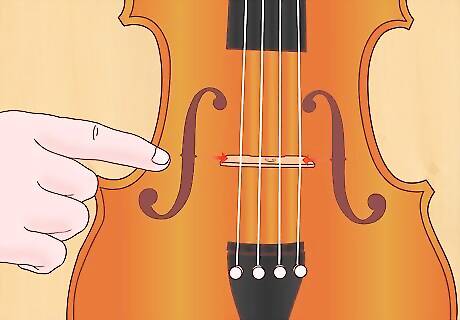
Make sure the bridge falls roughly in the middle of the f-holes. The bridge should be between the f-holes, roughly falling between the middle of each hole. The bridge may have slipped slightly while you were tightening the strings, so once again check. Make sure you can draw an imaginary line through the center of each f-hole that runs through the bridge. If the bridge has moved, gently slide it up or down until it's in the right place.
Avoiding Bridge Issues in the Future
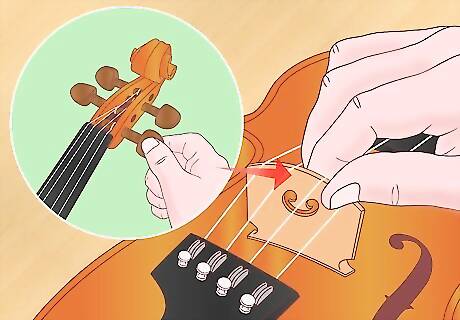
Hold the bridge when tuning. Bridges often fall out of place during tuning. To prevent this from happening, make sure you hold your bridge in place with one hand when tuning.

Replace strings individually. On occasion, you will need to replace the strings of your violin as they break and wear down over time. In this case, make sure to replace strings individually. Removing more than one string at once can cause the bridge to fall out of place.
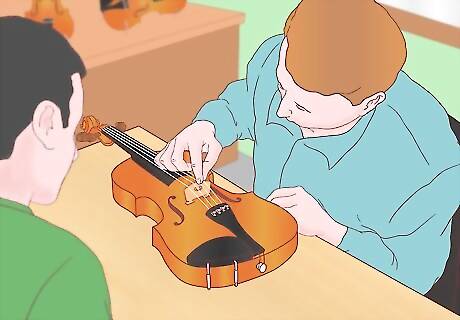
Have a professional (or your instructor) place your bridge. Take your violin to an instrument shop, preferably the one where you bought your violin. A professional there will also sand it, if necessary, and make sure it's the right size for your violin. Your instructor might also be able to do the same.













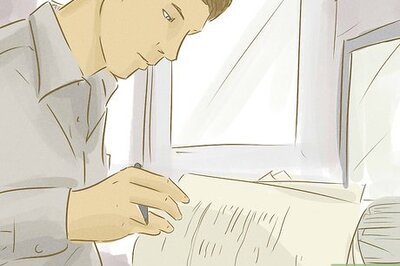





Comments
0 comment